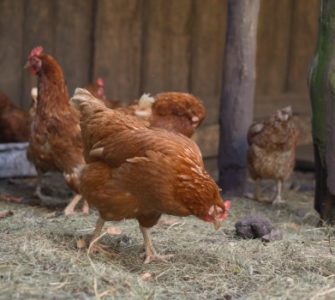Training and management critical for cage-free egg production
Training chicks and pullets so they are prepared for life in cage-free egg systems is critical to ensuring they meet their full productive potential, according to a leading veterinarian.
Isa Ehr, DVM, a technical services veterinarian with Hendrix Genetics, said birds reared in conventional pullet houses could find moving to cage-free barns difficult, leading to feeding and laying issues.
But, he said, by raising pullets in systems which closely resemble or match the lay houses they will be transferred to, egg production is less likely to be affected.
“Number one is training and management, because [cage-free production] is very different to a conventional pullet-growing operation,” Ehr told Poultry Health Today.
“Also…if they are trained appropriately, they will use the nest boxes, and there’s less chance that the birds will lay eggs in areas on the floor that they shouldn’t be laying them in.”
While floor access requires different bird management, it also creates health challenges farmers might not have encountered in conventional systems, Ehr added.
In particular, the risk of coccidiosis is greater because of the increased chance of birds being exposed to microbes on the barn floor.
“In the event a pullet flock does get exposure to coccidiosis, that will open them up for necrotic enteritis,” he said.
Other common health issues in cage-free systems include Salmonella, Escherichia coli and respiratory issues, as access to feed and dust bathing creates an environment where respiratory conditions can be elevated, he added.
To address health concerns, Ehr said it is vital that producers switching to cage-free adopt protocols which include proper vaccination and cleaning.
“Vaccines for coccidiosis, E. coli and Salmonella will help any floor-bird operation [and] help increase livability.
“Biosecurity is also a big component of cage-free,” he added. “If you keep [bedding] clean and don’t introduce any bacterial or protozoa contamination, you’re fine. But that is a much, much more difficult challenge compared to…a conventional pullet-growing system.”
Ehr said the most successful pullet growers are those who really focus on traffic patterns.
“Anything entering or exiting a house — so making sure you have dedicated footwear, because you are going into an animal area and the birds may have contact with the floor,” he said. “That’s really the No. 1 easy way to introduce an unwanted pathogen.”
Getting to these steps takes time but making incremental changes to systems increases the likelihood of success, Ehr said, which will in turn give producers confidence to keep driving improvements.
“If they’re transitioning to a whole new housing system with a whole new set of challenges, it’s very difficult to be successful overnight,” he added.
“So it’s a gradual, step-by-step [approach], and seeing what works and what doesn’t work given your infrastructure at a particular location.”
Posted on August 27, 2020

















